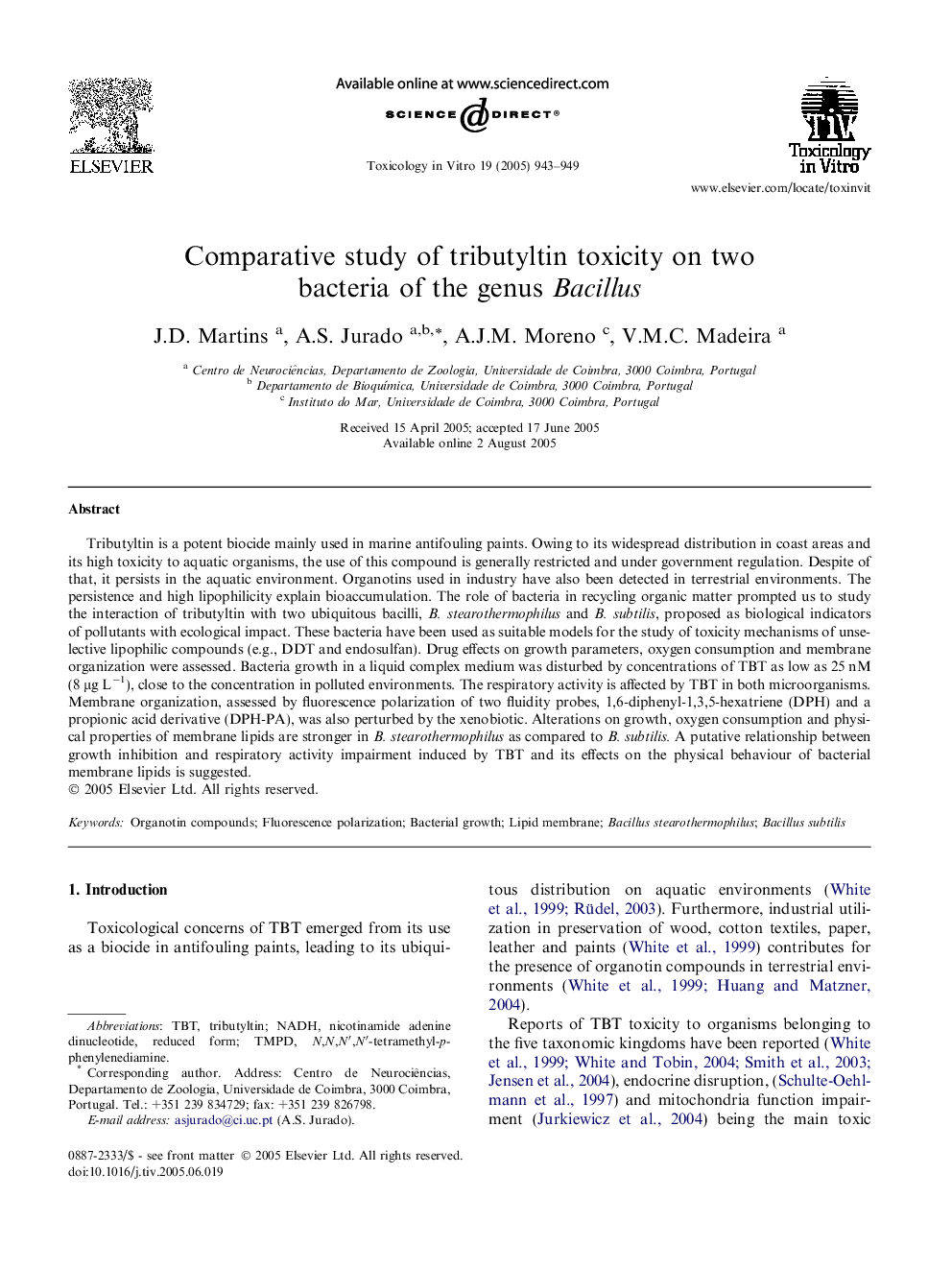| Article ID | Journal | Published Year | Pages | File Type |
|---|---|---|---|---|
| 9038809 | Toxicology in Vitro | 2005 | 7 Pages |
Abstract
Tributyltin is a potent biocide mainly used in marine antifouling paints. Owing to its widespread distribution in coast areas and its high toxicity to aquatic organisms, the use of this compound is generally restricted and under government regulation. Despite of that, it persists in the aquatic environment. Organotins used in industry have also been detected in terrestrial environments. The persistence and high lipophilicity explain bioaccumulation. The role of bacteria in recycling organic matter prompted us to study the interaction of tributyltin with two ubiquitous bacilli, B. stearothermophilus and B. subtilis, proposed as biological indicators of pollutants with ecological impact. These bacteria have been used as suitable models for the study of toxicity mechanisms of unselective lipophilic compounds (e.g., DDT and endosulfan). Drug effects on growth parameters, oxygen consumption and membrane organization were assessed. Bacteria growth in a liquid complex medium was disturbed by concentrations of TBT as low as 25 nM (8 μg Lâ1), close to the concentration in polluted environments. The respiratory activity is affected by TBT in both microorganisms. Membrane organization, assessed by fluorescence polarization of two fluidity probes, 1,6-diphenyl-1,3,5-hexatriene (DPH) and a propionic acid derivative (DPH-PA), was also perturbed by the xenobiotic. Alterations on growth, oxygen consumption and physical properties of membrane lipids are stronger in B. stearothermophilus as compared to B. subtilis. A putative relationship between growth inhibition and respiratory activity impairment induced by TBT and its effects on the physical behaviour of bacterial membrane lipids is suggested.
Keywords
Related Topics
Life Sciences
Environmental Science
Health, Toxicology and Mutagenesis
Authors
J.D. Martins, A.S. Jurado, A.J.M. Moreno, V.M.C. Madeira,
